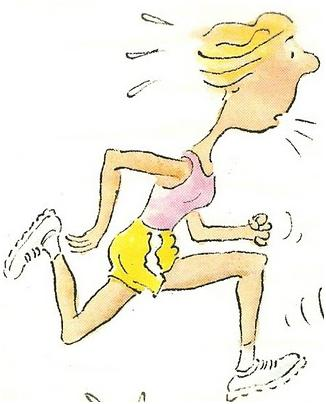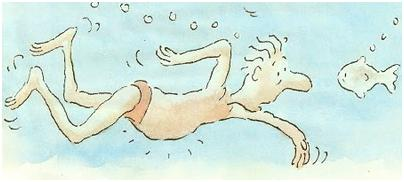What type of athlete are you?
Alan Couzens, M.Sc. (Sports Science)
Nov 13th, 2014
It takes Different Strokes to rule the world
- Different Strokes theme
While I had to confess my complete lack of qualification in talking on last month's subject of time management, things have come full circle this month to a topic that I am intimately familiar with -- the relationship between training load and top performance.
The fact of the matter is, I spend a good deal of my life tracking and analyzing this load:performance relationship for a wide variety of athletes. In the course of doing so, I have noticed some interesting trends in how different athletes respond to different amounts and types of training.
Elite run coach Terrence Mahon offered a really unique take on altitude training response at the last altitude training symposium. While most altitude researchers have taken the position of identifying "responders" and "non-responders" to altitude, he offered a different position and suggested that everyone responds to altitude, some just do it more quickly than others. Thus, he modified the definition to "fast responders" versus "slow responders."Genetics research has come to similar conclusions by discovering that not only is initial VO2max partly genetically determined (to the tune of 40% according to studies from Bouchard), but also that "trainability" is genetically influenced. In other words, it will take a different training load to reach a given performance level depending on the individual peculiarities of the athlete. With the use of mathematical modeling, I have taken an interest in quantifying how different athletes respond to different training loads and have come to a similar conclusion as Mahon, in that genetic "limitations" tend to manifest more in the time and training it takes for an athlete to become great rather than their ability/inability to do so. In other words, everyone responds to training, some just respond more quickly than others.
I use two primary numbers to define an athletes personal load:performance relationship:
The first (P0) refers to the athletes "foundational fitness," in other words, if this person didn't train, how fit would they naturally be? Or, put another way, what is the person's natural athletic ability?
The second (ka) refers to how "trainable" the athlete is, in other words, the amount of performance "bang" that the athlete gets from each training "buck." You can read more about that metric and how it is calculated here
Using these two numbers, I can define the athlete as a quick, medium or slow responder to training.
Quick Responders (The Naturals)

A lucky ~15% of the athletes I come across, I would define as a quick responder or "natural athlete" (ka>0.2, P0>50). These folks are able to manifest good results off modest loads if they put in short periods of focused training. Looking at the athletes from my squad that fit this bill, I would conclude that their characteristics include:
* Strong/Mesomorphic Athletes: Strong legs, have no problem putting on muscle or hitting strength benchmarks. May have issues with keeping muscle off!
* Light frame: Despite looking strong, they are not typically as heavy as they look (Meso-Ecto Somatotype).
* Very good "short numbers" Naturally strong 5-minute power numbers early in the season, typically good 1500/5k times relative to their longer benchmarks
* High levels of untrained VO2 max (~50ml/kg/min)
* Good ability to produce high levels of lactate - 12+mmol at the end of a progressive bike test.
* Responds very well to small doses of high intensity sharpening training just before an event but too much quickly tears them down. The vast bulk of their training should be relatively low intensity aerobic.
* Often needs to pay more attention to recovery due to higher output/muscle damage. Can be a little 'fragile' & prone to injury.
* Likes to go fast, sometimes has a hard time holding back. Often less patient (and sometimes less consistent) in their approach as they haven't needed to be to get results in the past.
Stringing together even moderately long, consistent blocks of intelligent, progressive training has big performance benefit to these athletes.
Medium Responders (The Realists)

The bulk of (~2/3) of the athletes I come across will fall under the medium responder category (ka=0.1-0.2, P0=40-50). The athletes that "make it" from this category are typically more patient and realize that, at least for most, it takes a long time & a lot of work to become good.
* These folks are a more "normal" mix of body types but generally pretty proportionate in either muscle:bone (i.e. larger frame) or muscle:fat, i.e. either ectomorphic or endomorphic somatotypes.
* Fairly balanced performances (when trained) across the race spectrum
* Medium levels of untrained VO2max (~40ml/kg/min)
* Moderate abilities to produce lactate (8-12mmol at the end of a progressive bike test).
* Responds well to balanced training -- a mix of intensities throughout the year.
* Benefits more from longer training builds (with less frequent racing).
* Demands a lot of consistency/persistence, appropriate attention to injury/illness prevention and a little bit of luck in order to reach the same levels of performance as the quick responders.
Slow Responders (The 'Workhorses')
 These are the 'workhorses' (ka less than 0.1, P0 less than 40) The athletes who require (& can usually handle) lots of load to get significant improvements in performance. The folks who do well from this category often do so from putting the work first. These are the athletes who develop the habit of taking pride in things like mileage and consistency and sure enough, after several seasons of this approach the results eventually come.
These are the 'workhorses' (ka less than 0.1, P0 less than 40) The athletes who require (& can usually handle) lots of load to get significant improvements in performance. The folks who do well from this category often do so from putting the work first. These are the athletes who develop the habit of taking pride in things like mileage and consistency and sure enough, after several seasons of this approach the results eventually come.
* These folks are often smaller athletes. Shorter in stature, can have a tendency to carry a little more body fat, esp during the off-season but generally strong, compact & resilient! (Meso-endo somatotype)
* Has a tendency to do better over longer events for any given level of fitness. Low levels of untrained VO2max (~30ml/kg/min)
* Low ability to produce lactate (frequently less than 8mmol at the end of a progressive bike test)
* Often has a strong ability to recover quickly (as less mass/output means less muscle damage).
* Females are disproportionately represented in this group as a sub-category who can handle a lot of aerobic load!
* Benefits from high training load AND a relatively high training intensity.
* Can be prone to periods of frustration/doubt when comparing themselves to those who get fit more quickly. Benefits from stringing seasons of consistent work together. Can often out-train their compatriots and can still reach very high levels of performance given the opportunity to express their typically higher than normal energy levels and work ethic.
#####
Whatever category you may fall into, it is important to realize that each group has strengths and weaknesses and each group has been represented at all levels of performance (including the Olympic Games). Legendary swim coach Doc Counsilman exemplifies this with the story of John Kinsella versus Mark Spitz. While Spitz was more of a natural swimmer and, according to Counsilman, adopted a more "relaxed" attitude to training, Kinsella embraced his drive/ability to outwork Spitz and both men ended up breaking world records.
Train Smart,
AC
TweetDon't miss a post! Sign up for my mailing list to get notified of all new content....
